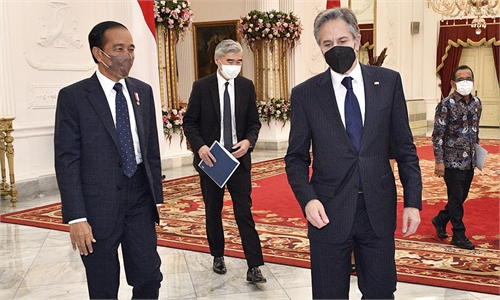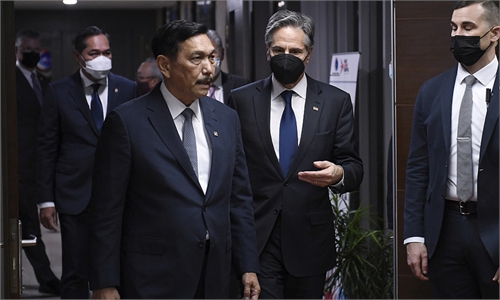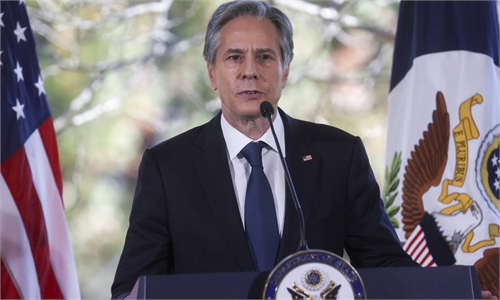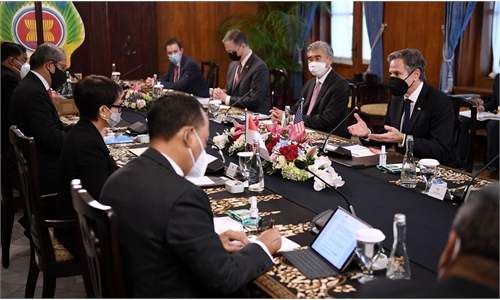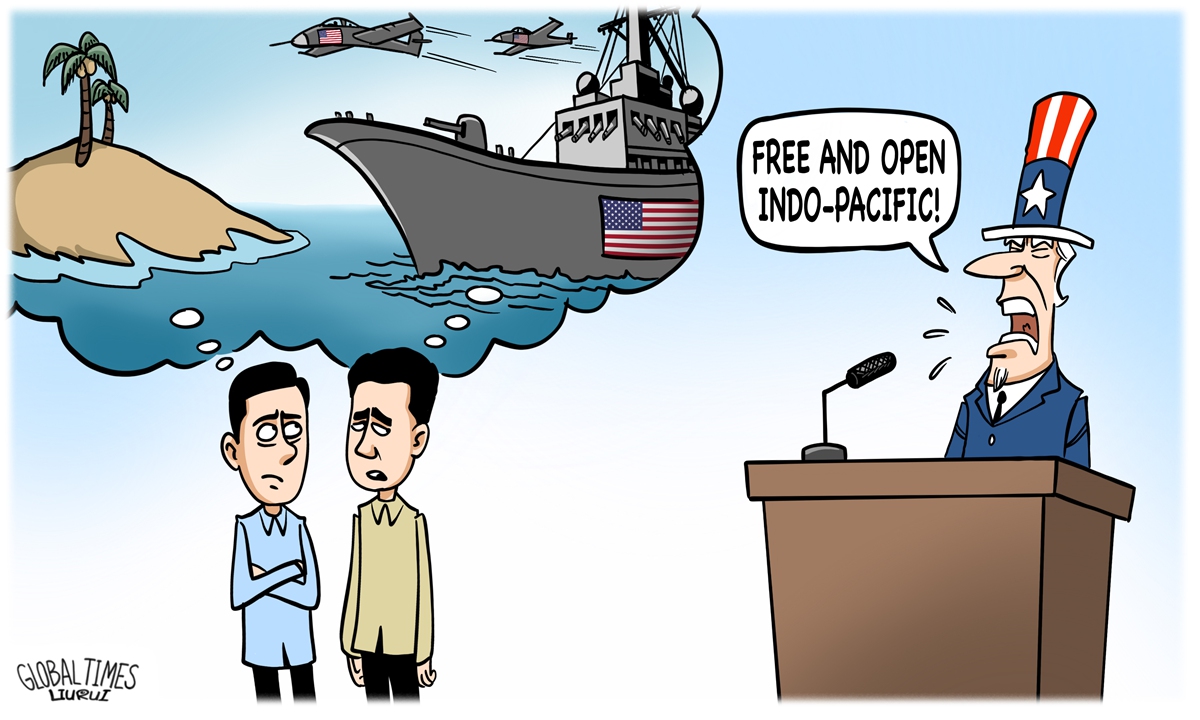
Illustration: Liu Rui/GT
A succession of high US officials including Vice President Kamala Harris have visited ASEAN in the past nine months, the pivotal region in the fledgling Biden administration's assertion of it claim to be the singular leader of the "democratic world." Its intention is clear, to convene an in-person meeting in early 2022 with ASEAN leaders to usher in "Pivot to Asia 2.0."The charm offensive aims to restore the US to "the head of the table" of global affairs. Unfortunately, its two recent initiatives to boost US prestige - the Summit for Democracy and the "diplomatic boycott" of the Beijing Winter Olympics - have been dismal flops. Given the skepticism the repeated flops have generated, it is doubtful that this charm offensive, "Pivot to Asia 2.0," faces a better fate.
The US charm offensive on ASEAN carries a "harm potential" stemming from promotion of the "rules-based order." First heard in 2003 from US President George W. Bush, it was used to skirt the UN in order to attack Iraq. US State Secretary Antony Blinken, in his speech in Indonesia, invoked that "the rules-based order that we built together over decades." Nobody recalls when the US discussed this with ASEAN - or is it with the defunct SEATO during the Cold War?
The "rules-based order" pushes unfettered US "Freedom of Navigation" operations purportedly to keep "a free and open Indo-Pacific" but masks gunboat diplomacy through ASEAN coastal states threatening regional tranquility. The South China Sea has been safe and free for millennia past until the US and Australia started Talisman-Saber naval drills in 2005 training to interdict the Malacca and other South China Sea straits crucial to the trade shipping route and mainly to China.
Claims of disputes on the South China Sea have been managed peacefully through dialogue and a Code of Conduct in the process to guide coastal states in maritime comportment. China also recently announced it supports ASEAN's efforts to build a nuclear weapon-free zone based on ASEAN's Southeast Asian Nuclear-Weapon-Free-Zone (SEANFZ) Treaty.
Blinken claimed that the US' persistent implorations on ASEAN are "not about a contest between a US-centric region or a China-centric regions." US expeditions from America 17,000 kilometers away to the region belies its true intentions over the years since the US "Pivot to Asia" transferring 60 percent of its military assets thereat - clearly to contain the rising economic power in our region.
Nevertheless, China and ASEAN progressed to a "comprehensive strategic partnership" in November 2021 after a decade of intense mutual undertakings and China's unprecedented economic, humanitarian, financial, and infrastructural assistance to ASEAN countries. Not to be outdone, US Assistant Secretary Daniel Kritenbrink recently declared that "President Biden is committed to elevating US-ASEAN engagement to 'unprecedented levels.'"
"Unprecedented" is as amorphous as "rules-based order," accompanied by unimpressive promises such as $102 million to expand the US-ASEAN Strategic Partnership, $40 million for strengthening "health system capacity," and $20.5 million for Climate Change initiatives, but the largesse falls far short of what China is already engaged in with ASEAN.
At the November 2021 China-ASEAN Special Summit, President Xi Jinping committed $1.5 billion of development assistance in the next three years to aid in the COVID-19 fight and economic recovery, and buy $150 billion of agricultural products from ASEAN in the next five years. Besides these are the benefits to ASEAN in the Regional Comprehensive Economic Partnership (RCEP) agreement with China.
The US insists its charm offensive is not to pressure ASEAN to take sides, while ASEAN leaders and peoples respond to this claim with polite silence. The insult to ASEAN from Biden's discriminatory approach to the recent "Summit for Democracy" only made it worse for the US in the region. ASEAN seeks economic upliftment for its peoples and today only China assures win-win economic relations for ASEAN to achieve this.
The US is in dire need of a reality check now that its dreams of hegemony are but a delusion. Economics and trade are vital indicators and China-ASEAN 2020 $684.6 billion trade price tag eclipses the US' $362.5 billion. In the COVID-19 crisis, China's vaccine humanitarianism put the US to shame. In diplomacy, China has even converted the weakest link in ASEAN unity, "Filipinos now view China as [a] potential ally" according to the PUBLiCUS Asia Inc's second quarter poll this year.
The US charm offensive for its "Pivot to Asia 2.0" is has seriously been damaged by the US itself - its internal schism projects the image of an unpredictable future, and threatens financial Armageddon from burgeoning debt. The US is losing its Latin American "backyard" as countries there turn to China for ties. How can ASEAN even think of choosing America over China with its track record friendship and dependability for ASEAN, and smashing socio-economic and political success?
The author is the founder of Philippine-BRICS strategic Studies, a Philippine think tank, and writer-columnist of SovereignPH.com and the Philippine News Agency news site, broadcast and online political-economic host and commentator. opinion@globaltimes.com.cn
